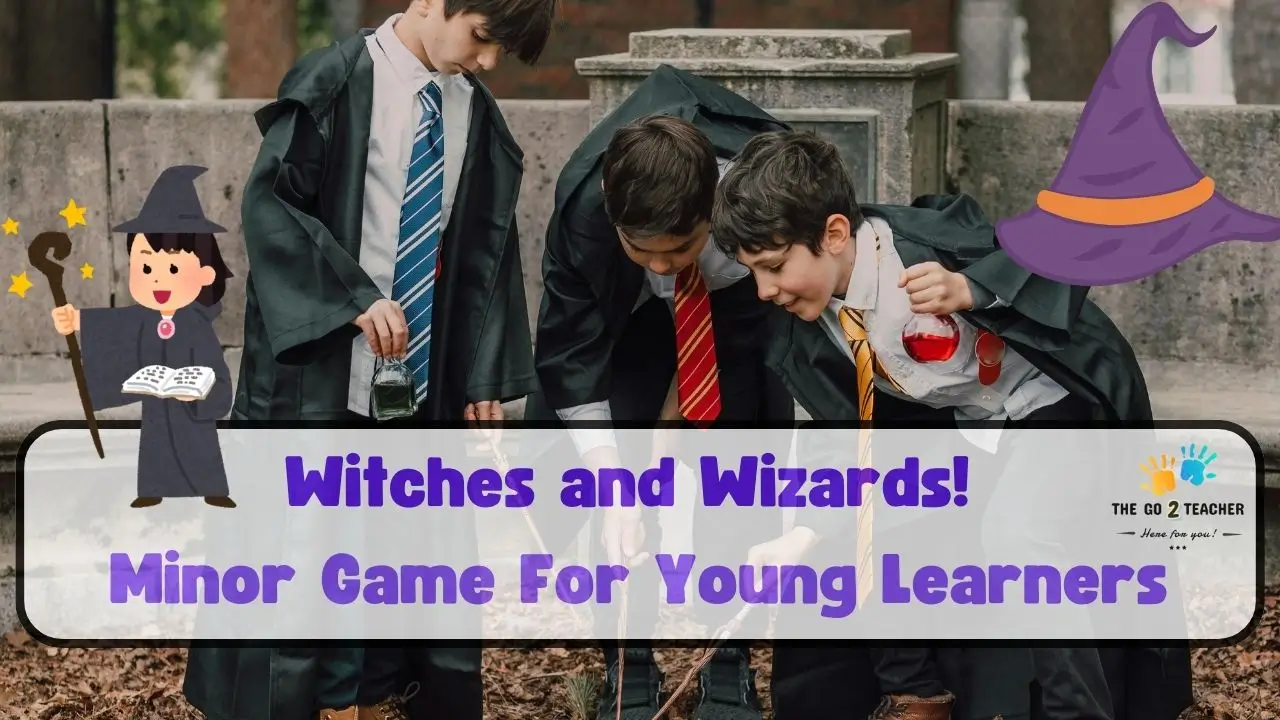Witches and Wizards | Early Years P.E
Jul 22, 2024


Kas
A simple game requiring minimal resources but maximum imagination! A great game for early years students which will allow them to use equipment in a tag-based game that has a magic theme. This is a great game to use during ‘Book Week’ or any magical-themed school event!
A wonderful warmup or activity that can be modified to suit the needs of your lesson, a great activity to use if you need to engage students in a unique and creative way!

What Do You Need?
- Cones/ Witches Hats
- Playing area
What Is The Goal Of The Game?
- Tag Team Game Using Equipment
- To Tag as many of the other team as you can
How Do You Play?
- Split the class into two teams
- One team are the wizards and the other team is the witches
- Provide each student with a witch’s hat/cone, if possible each team having the same coloured cone or wearing a bib or sash to signify the team their in by colour
- Both teams start at the opposite end of the court
- When the teacher blows the whistle, students are free to run anywhere on the court
- Students attempt to tag a student from the opposing team
- Students do this by gently taking their cone ‘as a wand’ and touching (Casting a spell) another student on the shoulder, when they do this, they stop running and play a game of rock, paper scissors
- If the tagging (attacking) students win, the student who got tagged (defending) has to sit down where they are and place the cone on their head to signify, they are out.
- If the defending student wins, the spell is not successful and students are free to run away. The attacking student has to give the defending students a 5-second head start
- The team that has the most untagged students at the end of 4 minutes wins the game!

How Can You Modify It?
Make it easier!
- Play in a bigger space
- Students get two chances
Make it Harder!
- Make the space smaller
- No rock paper scissor, if you get tagged you are out of the game
What Are The Main Skills Being Utilised?
Fundamental Movement Skills:
- Locomotor- run, jump, dodge, lunge, side step, leap
- Stability- turning, balance, stopping, bending, stretching
Tactical Skills:
- Scanning the field of play to make decisions
- Cooperative play, supporting teammates
- Following rules and structures of a game
- Critical thinking through decision-making
What Does The Evidence Say About Making P.E Lessons Engaging??
- Promotes Lifelong Healthy Habits: Engaging P.E. lessons can in still a love for physical activity in students, encouraging them to maintain an active lifestyle throughout their lives. Regular physical activity has been linked to reduced risk of chronic diseases such as obesity, cardiovascular diseases, and diabetes. When students enjoy P.E., they are more likely to continue participating in physical activities outside of school and into adulthood
- Enhances Academic Performance: Studies have shown that physical activity can improve cognitive function, concentration, and memory. Engaging P.E. lessons help students stay active, which can lead to better academic performance. For instance, physically active children tend to have better grades, school attendance, and classroom behaviours compared to their less active peers
- Supports Mental Health and Social Skills: Engaging P.E. lessons can have a positive impact on students’ mental health by reducing symptoms of depression, anxiety, and stress. Moreover, P.E. provides a platform for students to develop social skills such as teamwork, communication, and leadership. Participating in enjoyable physical activities can boost self-esteem and foster a sense of belonging among students
Sources:
- World Health Organization (WHO). (2020). Physical activity. Retrieved from [WHO website](https://www.who.int/news-room/fact-sheets/detail/physical-activity).
- Centers for Disease Control and Prevention (CDC). (2021). Benefits of Physical Activity. Retrieved from [CDC website](https://www.cdc.gov/physicalactivity/basics/pa-health/index.htm).
- U.S. Department of Health and Human Services**. (2018). Physical Activity Guidelines for Americans, 2nd edition. Retrieved from [health.gov](https://health.gov/paguidelines/second-edition/).
- Donnelly, J. E., & Lambourne, K. (2011). Classroom-based physical activity, cognition, and academic achievement. *Preventive Medicine*, 52, S36-S42.
- Biddle, S. J. H., & Asare, M.(2011). Physical activity and mental health in children and adolescents: A review of reviews. *British Journal of Sports Medicine*, 45(11), 886-895.
- Bailey, R., et al. (2009). The educational benefits claimed for physical education and school sport: an academic review. *Research Papers in Education*, 24(1), 1-27.
Helpful Resources:
- Fundamental Movement Skills: Flash Cards + Circuit
- Coloured Cones For Teaching P.E! (Amazon Link)
- How to create a better work life balance?
- Why are minor games important for students to learn?
- Emotional Regulation Posters
- Assessments for P.E- Ready to go
- What are invasion games?
- First time teaching P.E? Heres where to start!